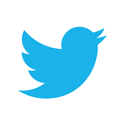What should you put in your design portfolio when you are just starting out?
This is a common question I get a lot and my go to answer is “put in your design process”.
Let’s say for example you are a graphic designer just starting out and have some logos that you have made as an exercise from school or something you made for yourself, but no “real” work from a paying client.
Just showing me (a potential client or hiring manager) a final logo design from classwork is not enough to convince me that you might be the right person to hire. Why? Because aside from a finished logo, it doesn’t tell me enough about you.
Let’s talk process…
I have already written some on the fact that I want to see the creative process you used to make the logo, including:
Research: knowledge about audience or end users and business needs
Competitive studies
Sketches, notes with insights
Storyboards
Design systems (color palettes, asset types, font choices)
Design Iterations
Really, anything that shows me the thinking behind your final solution. Adding those artifacts to your portfolio certainly helps me understand your creative process if you have them (Hint: reverse engineer them if you don’t).
So…what can you add if you only have a limited amount of those types of artifacts and/or they are only for schoolwork?
How you can convince potential design clients to hire you if you don’t have much work to show…
In addition to seeing some student work, something that can help you get work is to show your project planning process.
Why? Because people aren’t just buying design work from you, they are buying how you mitigate the risk in hiring you. In other words, if you can’t show much in the way of experience, you can show how you might handle a job if someone was willing to hire you.
For example, it in addition to seeing a logo design in your portfolio, it would be equally interesting to see how you:
plan a project and sell the scope of work
communicate progress on a project
manage a project when something unexpected happens
“People aren’t just buying design work from you; they are buying how you mitigate their risk in hiring you. ”
This means that you need to be able to show the activities, timelines, and deliverables associated with the type of work that you want to be hired for.
What could this look like?
Let’s go back to the logo example. In addition to putting an example logo in your portfolio, showcase what it would take for you to deliver a logo if I were to buy your design services.
It would be compelling to go to a portfolio page that had a logo or logos on it in your portfolio and below the aforementioned creative process information, I saw something like this deck I have posted below. (I will use my own site logo as an example):
This deck has all the basic pieces you need to communicate to a potential client what work you would do to create a logo if they hired you, how long it would take for the prescribed activities, how they feed into each other, and all the things the project would need from the client to succeed.
It is the basic formula that I use every day to sell work to clients and its goal is to assuage a client’s concerns about how work gets done should they be willing to engage with you. It is what you need to convince people to take a chance on you.
Take away
If you don’t have enough “real world” design work to show in your portfolio, then your best path forward is to show your process of what it is like to work with you in a way that makes the client feel confident in your ability to deliver.
Create a process deck like the one above for each type of work you desire to get hired for and you will be much better prepared to sell your services when you talk to a potential client.












